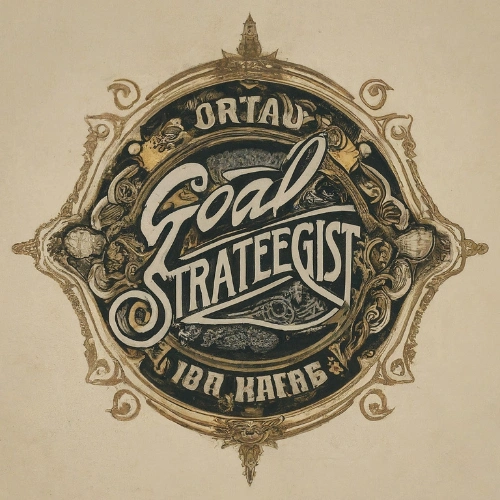Aligning your team with your company’s goals isn’t just about giving orders; it’s about creating a shared vision. When everyone’s rowing in the same direction, you’re not just building a business, you’re building a legacy. But how do you get everyone on board?
It starts with understanding that alignment is a two-way street. You’ll need to communicate effectively, connect individual roles to the bigger picture, and foster a culture of shared success. Ready to see your team’s productivity soar and your goals met with unprecedented enthusiasm? Let’s dive into the strategies that make this possible.
The Importance of Aligning Employees with Company Goals
Aligning your team with the company’s goals is critical to not only enhance productivity but also to foster employee engagement and job satisfaction. When you’re part of a team that shares a common vision, you’re more likely to put forth extra effort, innovate, and support your colleagues. This is the magic of alignment; it transforms individual accomplishments into collective success.
Understanding how your daily work contributes to the company’s broader objectives makes your role more meaningful. It’s a powerful motivator. The success of modern organizations hinges on their ability to communicate these goals effectively and ensure that every team member not only understands them but also sees their part in achieving them.
Here’s a glance at the multifaceted benefits of goal alignment:
- Increased Clarity: Clear understanding of objectives leads to better decision-making and priority setting.
- Enhanced Collaboration: When employees know the end game, they work better together to reach common milestones.
- Boosted Morale: A team that’s rowing in the same direction feels empowered and values their contribution.
- Improved Efficiency: Aligned goals eliminate confusion, reducing wasted effort and enhancing performance.
- Better Accountability: Understanding their impact, employees take greater ownership of their results.
To actively realign your team’s focus, this alignment needs to be reviewed regularly. In an ever-changing business landscape, ensuring that employee objectives sync up with evolving company goals is not a one-time event. It’s an ongoing journey that requires continual reinforcement and adaptation.
Remember, alignment is not just about agreeing on a destination. It’s about crafting a roadmap together and having everyone understand their role in the journey. When your team sees how their daily work impacts the company’s success, they’re more likely to go above and beyond, driving not just their own success, but that of the entire company.
Effective Communication Strategies for Alignment
Effective communication serves as the cornerstone for aligning employees with your company’s goals. It’s not just about relaying information but ensuring that it’s understood and embraced at all levels of your organization. To kickstart this process, consider implementing transparent dialogue. This involves sharing not only the goals themselves but also the rationales behind them. When employees understand the ‘why,’ they’re more likely to buy in.
Crafting a communication plan is critical. Here’s what you’ll need:
- Defined Key Messages: Identify the core messages that are essential to your company’s goals.
- Target Audiences: Recognize that different groups within your organization may require tailored communication.
- Channels and Tools: Choose the most effective mediums for reaching your audiences, whether it’s meetings, emails, internal newsletters, or collaborative platforms.
Remember, the medium is as important as the message. Nothing beats face-to-face communication when it comes to direct interaction and the opportunity to provide immediate feedback. Embrace regular meetings and interactive sessions such as Q&As or workshops to foster a two-way dialogue.
You’ll want to leverage the power of repetition. Reinforcing the company goals through various channels and at regular intervals will help cement these objectives in your employees’ minds. Consistency is key. Every email, meeting, or company update should echo the common themes relevant to your goals.
Don’t overlook the importance of feedback loops. Encourage employees to share their thoughts and ideas on achieving the set targets. Incorporate mechanisms such as suggestion boxes, surveys, or open forums where feedback is not just collected but actively considered and responded to. This not only promotes a culture of openness but also gives employees a sense of ownership and responsibility towards the company’s direction.
Aligning employees with company goals is a continuous process that thrives on effective communication. By utilizing these strategies, you enhance connection and commitment, driving performance and success throughout your organization.
Connecting Individual Roles to the Bigger Picture
Successfully aligning your employees with your company’s goals hinges on making the connection between their daily tasks and the overarching objectives of the organization. When employees understand how their individual roles contribute to the company’s success, they’re more likely to be engaged and motivated.
Start by laying out the company’s vision and goals in a way that’s easily digestible. Break down these goals into departmental and individual objectives, ensuring that each team member can see where they fit in the grand mosaic of the company’s aspirations. Use clear language and SMART goals—Specific, Measurable, Achievable, Relevant, and Time-bound—to outline expectations and how each role’s output impacts the company’s trajectory.
Emphasize the importance of everyone’s contribution by recognizing and rewarding efforts that directly support and fulfill company goals. Here’s how you can strengthen the bond between individual roles and larger organizational targets:
- Hold regular team meetings to discuss progress on goals.
- Share success stories where individual contributions made a significant impact.
- Implement a recognition program that highlights how specific actions support company objectives.
Another powerful method is to integrate goal alignment into performance reviews. Encourage managers to discuss how an employee’s work has contributed to the company’s goals. This not only reinforces the importance of their role but also helps identify areas where they can increase their impact.
Lastly, ensure that all communication chains within the company reinforce the connection between individual work and the company’s success. Whether it’s a company-wide email, a departmental newsletter, or an informal team huddle, consistently communicate how daily efforts are helping to achieve the bigger picture.
By instilling a sense of purpose and showing how each task contributes to a common goal, you’ll foster a culture of unity and shared success.
Creating a Culture of Shared Success
In fostering a culture of shared success, it’s vital you emphasize the role of common values and beliefs in uniting employees with your company’s mission. Shared values become the glue that bonds team members, promoting an environment where everyone is moving toward the same goals.
Begin by clearly defining your company’s core values and then integrate them into every aspect of your business operations. Make these values visible and refer to them regularly in internal communications, meetings, and decision-making processes.
Employee involvement in goal-setting exercises cannot be overstated. When staff have a hand in crafting the goals they’re working towards, they’re far more likely to buy into them. You can facilitate this by:
- Holding brainstorming sessions to gather input
- Encouraging team members to set their personal objectives that align with company aims
- Allowing employees to voice concerns and suggestions
To reinforce a culture of shared success, consider the following strategies:
- Transparent Reporting: Share regular updates on company performance against goals. This includes both successes and areas needing improvement so that all employees understand how their contributions make a difference.
- Celebrating Milestones: Don’t wait for the end-of-year party to recognize achievements. Celebrate milestones along the way, acknowledging both team and individual accomplishments.
- Learning Opportunities: Provide training and development that helps employees grow in their roles and understand how their career trajectory aligns with the company’s direction.
It’s crucial to use story-telling to share past successes and failures. Stories resonate and become a powerful tool for reinforcing the culture you’re building. By sharing real examples of how individual contributions have influenced company success, you’re illustrating the direct impact of alignment on outcomes.
Remember, creating a culture of shared success is an ongoing journey. It requires patience, consistency, and an open ear to employee feedback to ensure that the strategies you put in place are indeed fostering the unity and commitment to goals that you’re aiming for. Keep evaluating and adjusting your approach as your company grows and evolves.
Strategies to Foster Employee Enthusiasm for Company Goals
Cultivating enthusiasm among your team for the company’s objectives is a key driver of alignment and success. Here’s how to breathe life and excitement into company goals, making them a shared focus for every employee.
Create an Emotional Connection: Employees who feel personally connected to the company’s goals are more likely to be enthusiastic about their work. Share stories that humanize the impact of the company’s success. Highlight how the work makes a difference in the real world to forge a deeper connection.
Involve Employees in Goal Setting: When employees have a hand in creating goals, they’re more invested in the outcomes. Hold brainstorming sessions where team members can contribute ideas and feel a sense of ownership over the company’s direction.
Provide the Right Tools and Resources: Ensure your team has what it needs to excel. State-of-the-art tools and training not only empower employees but also demonstrate your investment in their role in the company’s success.
- Offer continuous learning opportunities
- Upgrade technology as necessary
- Provide access to industry research and data
Encourage Autonomy and Creativity: Give employees the freedom to approach their work in ways that best suit their skills and creativity. Autonomy fosters innovation and can lead to new paths for achieving company goals.
Communicate Progress Regularly: Keeping everyone in the loop regarding the company’s progress instills a sense of camaraderie. Use internal newsletters, dashboards, or regular meetings to display measurable progress toward goals.
Build a Recognition-Rich Environment: A culture of recognition goes a long way in keeping morale high. Acknowledge both small wins and big achievements openly and regularly. Tailor rewards and recognition to fit the individual or team milestone, making it meaningful and motivating.
Embedding these strategies within your company’s culture ensures that goals are not merely top-down directives but become the heartbeat of the organization. Employees thrive when they’re part of a bigger narrative, where their contributions push the whole team toward shared success. Engaged and enthusiastic employees aren’t just working; they’re part of a collaborative journey toward achieving something extraordinary.
Conclusion
Aligning your team with your company’s goals isn’t just about laying out expectations—it’s about fostering a shared vision that resonates with every member of your organization. By engaging in transparent communication, creating an emotional bond with the objectives, and empowering employees through involvement and recognition, you’re setting the stage for a cohesive, driven workforce. Remember, it’s the consistent reinforcement and celebration of progress that keeps the momentum going. As you integrate these strategies, watch your company’s goals transform from words on a page to the pulse that drives your collective success. Keep the dialogue open, the recognition frequent, and the vision clear, and you’ll see your team’s alignment with company goals strengthen day by day.


Leave a Reply